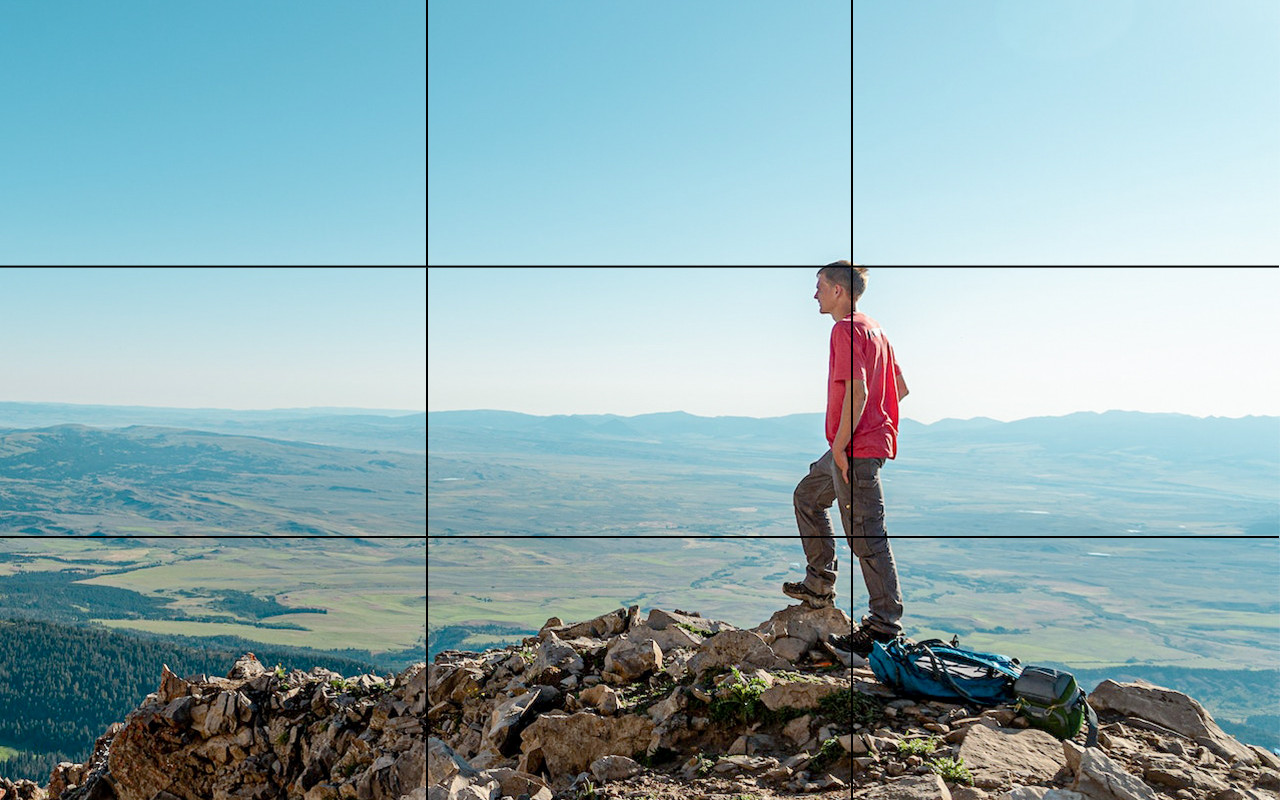
It's not a rule. It's more of a guideline or best practice," photographer and designer Shawn Ingersoll say of the rule of thirds.It's not a rule. It's more of a guideline or best practice," photographer and designer Shawn Ingersoll say of the rule of thirds.
Does every successful photograph abide by the rule of thirds? Not it's still an essential foundation to master when striving to improve your photography skills. Practice is undoubtedly vital as you're training your eye and muscle memory. With every repetition, trust in yourself grows until, eventually, what works or doesn't work becomes instinctual for any photographer!
"The more you do it, the more it gets ingrained into your head."
Khara Plicanic, a photographer, author, and instructor, has this to say about the rule of thirds: "Though you may be familiar with it, even if unaware at first glance, having this practical tool is incredibly helpful for those just starting in the composition. It's like second nature when viewing the imagery around us."
My approach to regulations is always, "Master the rules like a pro so that you can break them like an artist."

I consider composition guidelines a mini toolkit that can be utilized in diverse ways and applications. While they're not mandatory, they're beneficial for encouraging both structures and focus on one hand and creativity and imagination.

I love the rule of thirds because it's a straightforward concept. It's an essential compositional rule that many photographers use to improve their images, making them more visually appealing and impactful. Even though it can be difficult initially to incorporate into your shots, once you implement this technique, it takes no time for its positive effects on your pictures to become apparent!
Divide your image into nine equal squares using the rule of thirds and identify Points of Interest where all lines intersect. To create a visually appealing composition, place your subject at these points or along any line to attract attention. If you're having trouble visualizing this grid, most cameras offer an overlay feature for extra guidance when taking photos!
Our eyes are naturally attracted to points of interest first unless a particularly eye-catching subject is located in the center of an image.
Read Also: HOW TO BECOME A PROFESSIONAL PHOTOGRAPHER
Generally, positioning your subject off-balance and accentuating the composition with other elements, such as points of interest within the frame, creates a far more captivating photograph than if you had placed your subject in the center.
Also very important is to integrate one or two elements within the shot that can create balance or create energy, tension, or harmony with your subject. It's not enough to have your primary focus off-center; Let's check some examples for better clarity!
Let's start—with the rule of thirds when you align your horizon line. Don't just place it in the middle; instead, position it along either the top or bottom third of your image for more creative and visually pleasing results.
Contrary to what you may think, it is not as common to do this as one might expect. Out of the thousands of photos I have to portray a horizon line, only a select number deviate from that center-axis placement.
Every composition should have a purpose; otherwise, it just comes off as a useless technique. I used the two photos at the top of this article for a good reason: to capture the captivating clouds and sky in one shot and then transmute that beauty into light dancing across the water in another. The talent behind these photographs is evident.
By adding lines across your images, you can improve shots featuring a horizon line experiment by using this technique to emphasize objects in other photographs as well. For example, here I used it on some orderly trash bags - observe how the bottom edge follows one horizontal line yet is also emphasized by both pavement and double yellow lanes below. Layouts of lines and patterns, like vertical lines and brickwork, generate energy that provides a sense of movement and flow to the eye. This order amidst the chaos stimulates the mind, creating extraordinary visual appeal!
Read Also: HOW TO START A PHOTOGRAPHY BUSINESS IN 2023

People are naturally in awe of the beauty and harmony of nature on an immense scale - that astonishing view of a sunset over the ocean, for instance, or those picturesque wildflower meadows. Yet when we peep into our cameras and reduce each image to its microscopic details, we often fail to witness the serenity around us. But if this world's majesty can be experienced through wide-angle perspectives and intimate views seen with a camera lens, why not enjoy it? That is why knowing the rule of thirds can help bring balance and unity into your photos by guiding where elements are placed within the frame.
And now to Venice. The image below may seem complex, but what elements are essential? Focus your attention on the man; he stands right at one of the attractions. Notice how color and texture contrast changes across buildings along a single line!
Even though the rule of thirds can be a helpful guide, it is not necessarily set in stone. You should incorporate elements from this concept and add your unique touches! It's all about having fun and exploring possibilities - so go ahead and give it a try!
1) What is the most important part of the rule of thirds?
The rule of thirds is the easiest way to take a perfect picture! To achieve equilibrium and balance in your photographs, simply keep the main subject away from the center box. By placing it in any one of the top, bottom left, or right blocks of an imaginary grid instead, you can be confident that you'll get a stunning image every time.
2) What is the rule of third with example?
The rule of thirds is an essential principle to consider when taking photographs. You don't want the main elements of a photo lined up in the center, such as if you were photographing a waterfall. Rather than having its image placed directly in the middle, shift it left or right for more aesthetically pleasing results!
3) What disciplines use the rule of thirds?
The rule of thirds is a composition technique that will help bring balance and harmony to any medium, including design, painting, illustration, cinematography, or photography. With this tool in your arsenal, you can easily create stunning visuals!
4) Who invented the rule of thirds in art?
John Thomas Smith
In 1797, John Thomas Smith was the first to describe what we now call the rule of thirds formally. In his book Remarks on Rural Scenery, he referenced a 1783 work by Sir Joshua Reynolds, which discussed how dark and light could be balanced in paintings without providing any measurements or specifics. Today, this concept is known as the rule of thirds!
5) Should you always follow the rule of thirds?
The rule of thirds offers an optimal composition, but it's not mandatory. It can be applied to create ads, PowerPoint presentations, take photographs, and more. Think of the rule as a suggestion or guiding principle that you don't need to abide by rigorously every single time - just keep it in mind for better results!